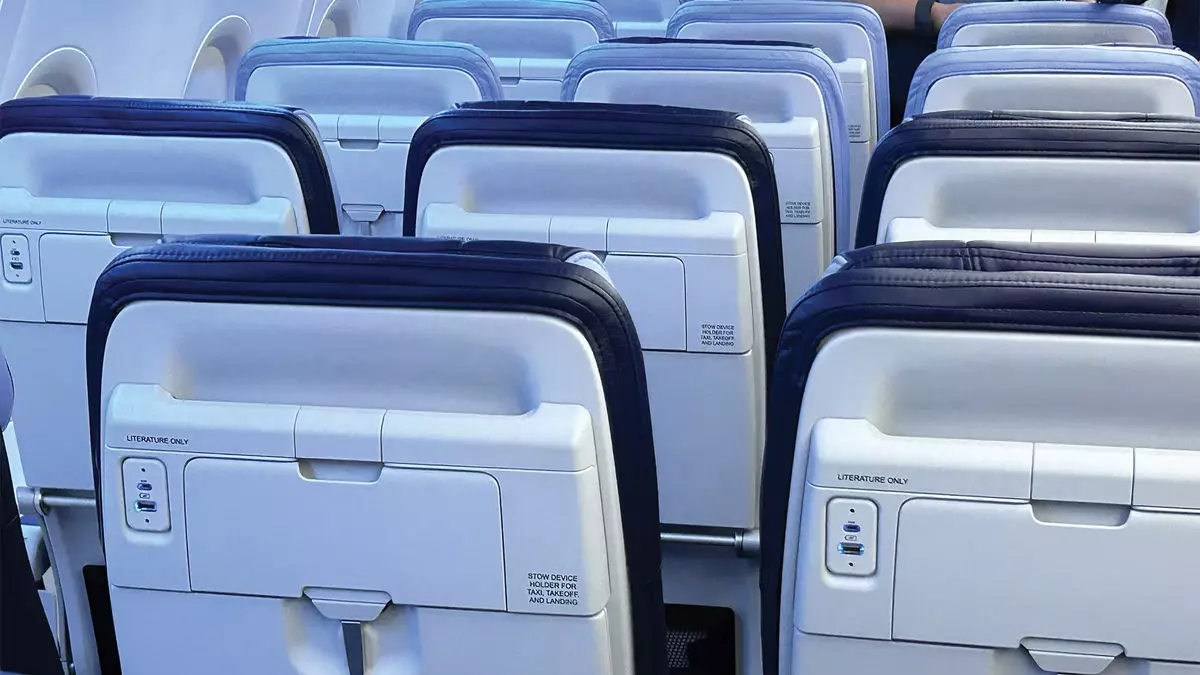As Southwest Airlines gears up for a transformative 2024, customers are poised to witness an evolution in the airline’s seating configuration. Beginning in the first quarter of next year, select Southwest aircraft will be outfitted with extra-legroom seats, allowing passengers an increased level of comfort during their travels. However, the transition to a fully assigned seat model—with extra-legroom options sold as a distinct category—will not occur until 2026. This shift marks an important turning point for the airline, which has traditionally adhered to an open seating policy for over half a century. It’s a complex operational shift that raises several questions about the potential consequences for customer experience, competitive positioning, and the overall effectiveness of management strategies.
The introduction of these extra-legroom seats—featuring 34 inches of space—represents more than just an addition to the seating arrangement; it signifies a cultural transformation within Southwest Airlines. CEO Bob Jordan highlights the necessity of a measured and thorough implementation process as the airline transitions from its established practice of open seating. Executing such a significant change takes time, and projections indicate a substantial effort lies ahead, including retrofitting 50 to 100 aircraft per month with capabilities to accommodate assigned seating.
However, the criticism from Elliott Investment Management, a major stakeholder in Southwest with an 11% ownership stake, underscores a sense of urgency for faster adaptation. Elliott’s critique suggests a belief that compared to competitors who have successfully rolled out similar initiatives seemingly with greater speed, Southwest’s approach may lack the required foresight and decisiveness. The advocacy for Jordan’s removal hints at greater internal pressures and the implications for corporate governance amid such transformations.
At the core of Southwest’s operational shift lies the intricate web of technological updates required to manage over 60 platforms under the new seating arrangement. Both Jordan and Ryan Green, the airline’s executive vice president of transformation, recognize the complexity involved in transitioning from open to assigned seating. Striking a balance between legacy systems and new initiatives is paramount; any misstep during this process could tarnish the customer experience. The officials emphasize the need for a “clean rollout” to evade potential chaos—an essential consideration when accounting for the varying operational capabilities of different aircraft within their fleet.
Transitioning to an assigned seating model in conjunction with open seating on other aircraft could amplify the risk of confusion and errors. Hence, a phased, planned approach is preferred—yet that, too, raises questions about responsiveness to customer demands and market dynamics.
With the introduction of the extra-legroom seats, Southwest plans to categorize its seating in a tiered manner, designed to maximize revenue while catering to diverse customer preferences. The most premium seats will be located in the first five rows, transitioning to lower-priced options as customers move further back in the cabin. This structure creates a hierarchical seating arrangement that pulls from existing fare categories while also innovating the pricing model, suggesting that seat assignments will be offered as add-ons rather than bundled in lower-tiered fares.
Such a pricing strategy indicates a broader trend toward differential pricing in the airline industry. The emphasis on graduated seating costs—where aisle and window seats potentially come at a premium over middle seats—mirrors practices adopted by other airlines. This move toward more personalized seating solutions may resonate positively with travelers who prioritize comfort, yet presents risks concerning customer perception of value.
Accompanying the changes in seating structure is a larger initiative aimed at boosting Southwest’s revenue by an ambitious $4 billion by 2027. Among the strategic maneuvers mentioned in recent announcements is the rekindled partnership with Icelandair, giving Southwest an opportunity to extend its reach and enhance its service offerings. This partnership—not only a sign of resurrecting old alliances but also of broadening market appeal—points toward a more interconnected strategy in response to the increasingly competitive aviation landscape.
The union with Icelandair holds promise. It can facilitate travel options for customers wanting connections to Europe while simultaneously benefiting Southwest by generating supplemental revenue streams. Integrating new and innovative partnerships will be crucial as the airline adapts to the evolving market.
The evolution of Southwest Airlines marks both an exciting opportunity and a formidable challenge ahead. As the carrier navigates its transition to a more customer-centric service model with extra-legroom seating and assigned seats, the focus on technological integration and stakeholder alignment will be critical for success. The balance of traditional practices and modern demands set the stage for what could redefine the Southwest brand in an increasingly competitive market. It’s clear that the road ahead will require strategic vision and operational excellence to meet customer expectations while driving sustainable growth.


Leave a Reply